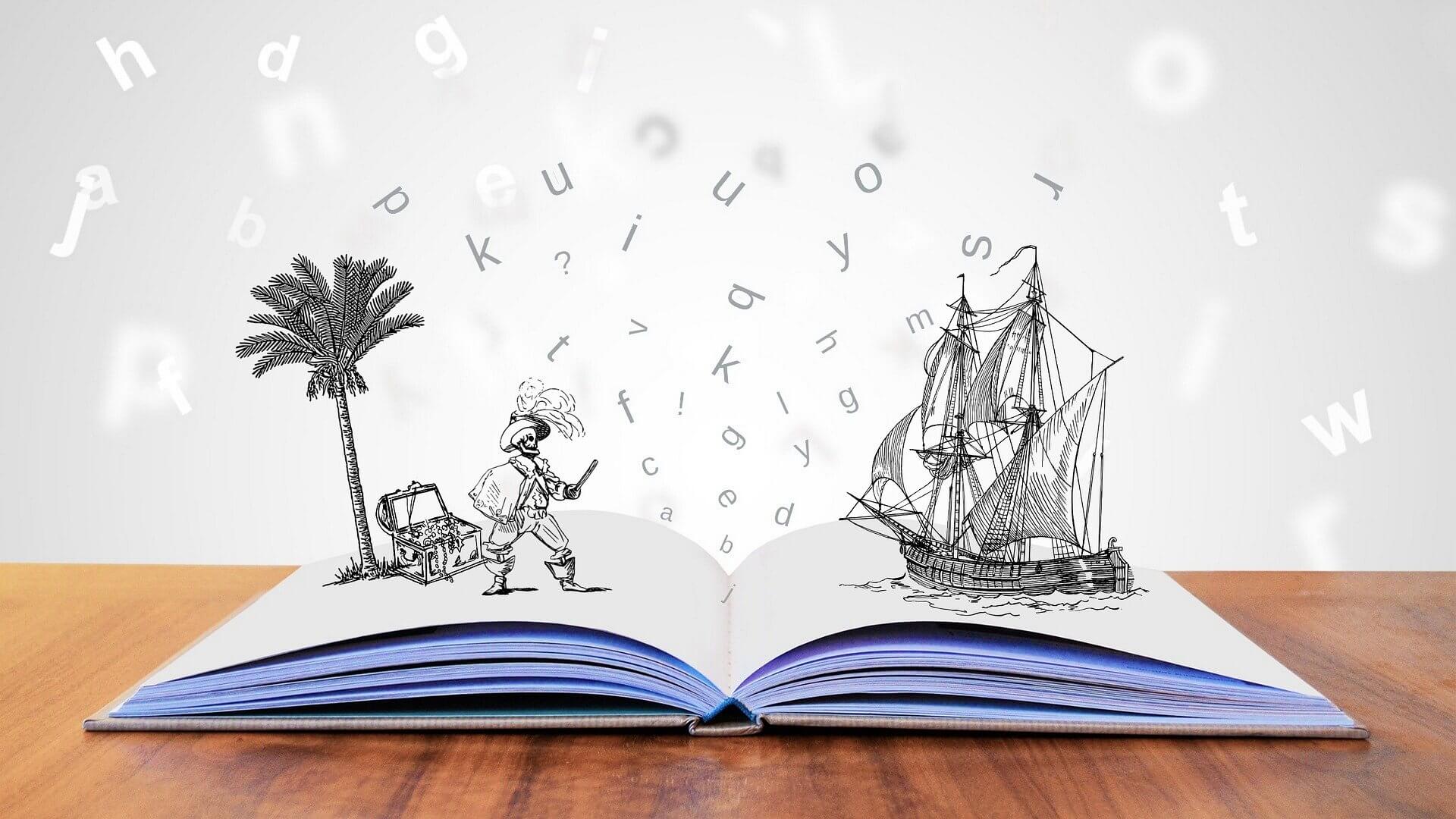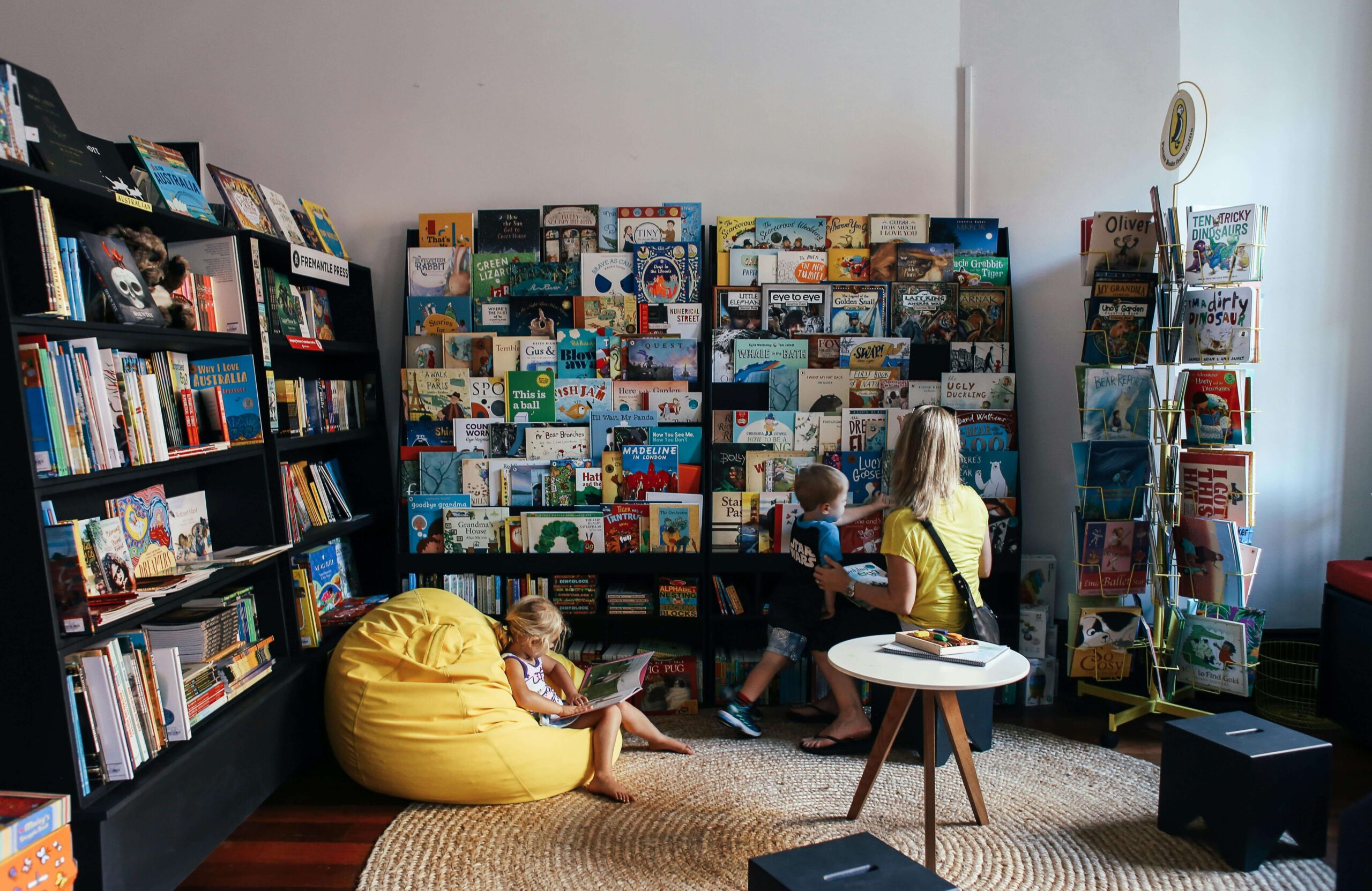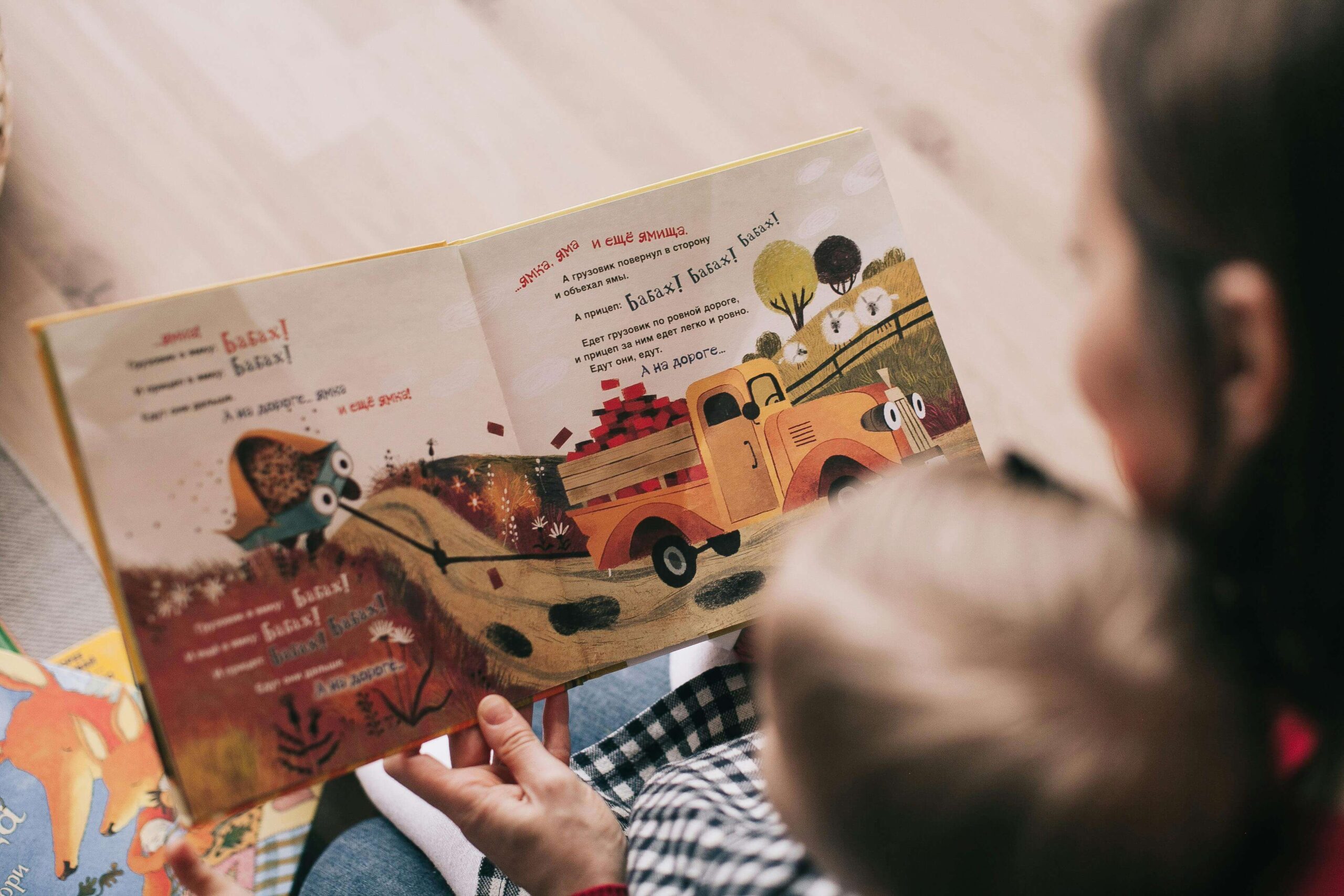
Writing a picture book isn’t like writing a novel, a short story, or even a chapter book. It’s more like writing poetry, designing a stage play, and solving a puzzle all at once.
In just a few hundred carefully chosen words, you have to tell a story that’s emotionally engaging, rhythmically satisfying, and visually dynamic. Every sentence—sometimes every word—has to earn its place.
And unlike most books, you’re writing with two audiences in mind: the child, and the adult reading it aloud.
The pictures aren’t just decoration. They carry half the narrative. That means you have to know when to say something with words and when to leave space for the art to speak. Pacing, rhythm, layout, and page turns all become storytelling tools, just as important as dialogue or plot.
If your idea can evoke a ‘yes!’ moment from both a five-year-old and their parent, you’re onto something.
In this post, I’ll walk you through the unique process of writing a children’s picture book, from your first idea to publishing options, using examples, practical tools, and lessons I’ve learned from research and personal experience.
Whether you’re a writer exploring a new genre, a parent with a story to share, or just someone who loves picture books, this guide will help you get it right.
Why Are Picture Books So Popular and Profitable?
Picture books might seem small, but they punch way above their weight in the publishing world. In fact, they’re one of the most consistently profitable categories in the entire industry.
According to IBISWorld, the U.S. children’s book market was valued at over $3.4 billion in 2023, and that number has been steadily rising. During the pandemic, sales of children’s books not only held steady, they actually outperformed adult fiction.
Families were stuck at home, and parents turned to picture books not just for entertainment, but for comfort, education, and connection. That buying behavior didn’t fade when things reopened. If anything, it reinforced how essential picture books are in everyday life.
Part of what makes them so appealing is their cross-generational charm. Parents, grandparents, teachers, and caregivers always buy them for learning, bonding, or gifting. A great picture book isn’t just read once and shelved. It’s read over and over, sometimes dozens or even hundreds of times.
Unlike trends in young adult or adult fiction that can fade quickly, timeless picture books have an incredibly long shelf life. Goodnight Moon, The Very Hungry Caterpillar, and Where the Wild Things Are are still topping bestseller lists decades after their first printing.
In fact, The Very Hungry Caterpillar sells an estimated one copy every 30 seconds worldwide. That’s the kind of staying power most authors can only dream of.
They’re also highly giftable. Picture books are natural choices for birthdays, baby showers, holidays, and classroom celebrations. They’re small, colorful, and meaningful—everything a perfect gift should be.
And let’s not forget their international reach. A beautifully written and illustrated picture book can be translated into multiple languages and sold globally. The Gruffalo, for example, has been translated into over 100 languages. That’s the kind of scale you rarely see outside major franchises.
In other words, a good picture book is a bonding experience, an educational tool, and a sentimental keepsake. For publishers and self-published authors alike, it’s a rare mix of emotional value and commercial viability.
Different Types of Picture Books, and Which One Is Most Profitable
If you’re diving into the world of children’s publishing, one of the first things you’ll notice is that not all picture books are created equal. They come in many forms, each tailored to a specific age group, reading ability, and educational or entertainment goal.
Understanding the different types can help you decide what kind of story you want to tell—and which type has the best shot at both capturing readers’ hearts and turning a profit.
Here’s a breakdown of the most common types of children’s picture books:
| Type | Age Range | Page Count | Main Features | Popular Examples |
|---|---|---|---|---|
| Board Books | 0–3 years | 12–24 pages | Durable cardboard pages, minimal text, simple concepts | Brown Bear, Brown Bear, What Do You See? by Bill Martin Jr. |
| Concept Books | 2–5 years | 24–32 pages | Teaches basic ideas like numbers, letters, emotions | Chicka Chicka Boom Boom by Bill Martin Jr. & John Archambault |
| Narrative Picture Books | 3–7 years | 32 pages (standard) | Full stories with characters and arcs; often humorous or heartwarming | The Gruffalo by Julia Donaldson, Don’t Let the Pigeon Drive the Bus! by Mo Willems |
| Interactive Books | 2–6 years | Varies | Involve reader participation: flaps, touch-and-feel, or breaking the fourth wall | Press Here by Hervé Tullet |
| Rhyming Picture Books | 2–6 years | 32 pages | Uses rhythm and rhyme, great for read-aloud sessions | Llama Llama Red Pajama by Anna Dewdney |
| Nonfiction Picture Books | 5–10 years | 32–48 pages | Real facts and concepts told in a visual, accessible way | The Watcher by Jeanette Winter |
| Biographical Picture Books | 6–10 years | 32–48 pages | Focuses on the lives of real people with inspiring stories | Malala’s Magic Pencil by Malala Yousafzai |
So, Which Type Is the Most Profitable?
Among all the formats, narrative picture books aimed at ages 3 to 7 consistently rank as the most profitable in the children’s book market. Their success comes down to a few key factors.
First, they have broad appeal—parents, teachers, and librarians all gravitate toward them because they strike a perfect balance between storytelling, visual engagement, and educational value. They’re also re-read endlessly.
Young children often want to hear the same story night after night, which makes these books a staple on bedtime bookshelves and in classrooms alike.
Another reason they stand out is their potential for expansion. If your character or fictional world clicks with readers, it can evolve into a series or even a brand.
Just look at Pete the Cat or Elephant & Piggie—both started as individual stories and grew into best-selling franchises with merchandise, spin-offs, and adaptations.
Plus, narrative picture books are incredibly giftable. They’re ideal for birthdays, holidays, baby showers, and any moment when someone wants to give a child a meaningful and lasting present.
Publishers Weekly has reported that many of the top-selling children’s books over the past decade come from this very category. Authors like Mo Willems and Julia Donaldson have turned simple, clever stories into global phenomena.
Even self-published authors like Diane Alber, creator of the Little Spot series, have earned millions by tapping into this powerful format. If you’re looking for a sweet spot between creativity and market potential, narrative picture books are it.
Should I Hire an Artist or Use AI?
You can’t have a picture book without, well, pictures. The illustrations aren’t just background decoration. They are half the storytelling experience.
So one of the biggest decisions you’ll face is whether to hire a professional illustrator, create the art yourself, or experiment with AI tools. Each path comes with its own pros, cons, and considerations.
For most authors, especially those new to the world of children’s publishing, hiring a professional illustrator is the most trusted and reliable route. A skilled illustrator can bring your characters to life, add visual depth to your story, and elevate your book from good to unforgettable.

According to Reedsy’s marketplace data, children’s book illustrations typically cost between $1,500 to $10,000, depending on the number of pages, complexity of the illustrations, and the artist’s experience.
While it’s an investment, it often pays off in the form of more professional-looking books, better reader engagement, and increased marketability. Websites like Behance, Upwork, and Reedsy are excellent places to browse illustrator portfolios and get a feel for different styles and price points.
As mentioned, illustrations are half the story. So, the best illustrators mirror the text and add personality, emotion, and storytelling that words alone can’t carry.
That said, the rise of AI illustration tools has opened up new possibilities, especially for indie authors or those on tight budgets. These tools are fast, flexible, and capable of generating impressive artwork based on text prompts. They’re great for mock-ups, concept drafts, or even creating entire books if you’re willing to navigate the challenges.
And there are challenges. For one, there’s the legal grey area: many AI tools are trained on massive datasets that may include copyrighted artwork, which raises potential intellectual property concerns, especially if you plan to sell your book commercially.
There’s also the issue of character consistency—getting an AI to replicate the same character in different poses, angles, and emotions across multiple pages can be a frustrating experience. Then there are the ethical considerations.
Some illustrators feel AI undermines the value of human artistry and storytelling, and many publishers are wary of accepting books illustrated solely by AI for exactly that reason.
Personally, I’ve used AI tools for early drafts and creative brainstorming. It’s a great way to visualize scenes while still shaping your story. But when it comes to the final product, I still prefer working with a human illustrator. Nothing beats the collaborative process of discussing the emotional tone of a scene, tweaking facial expressions, or fine-tuning a layout until it just feels right.
In the end, whether you go with a traditional illustrator or test out AI will depend on your goals, budget, and audience. If you’re aiming for commercial success or hope to submit to agents and publishers, a professional illustrator is often the safer and more respected choice.
But if you’re self-publishing and experimenting, AI can be a useful tool, as long as you understand the risks.
What Tools and Programs Should I Use?
If you’re self-publishing a picture book, you’ll need a few tools to help you write, design, and publish it. The good news? You don’t need to be a tech expert to make something that looks professional. Here are some tools I’ve used or tested that can make the process smoother.
For writing, Google Docs is a solid choice. It’s free, simple, and lets you share your story with others for feedback. If you like to organize your ideas in sections or move parts of your story around, Scrivener is helpful—but it might be more than you need for a short picture book.
When it comes to designing your pages, Canva Pro is one of the easiest tools out there. You can drag and drop images, add text, and see how your book will look—all without needing design experience.
If you want more control and are going for a bookstore-quality layout, Adobe InDesign is the industry favorite. It’s more advanced, so it takes time to learn, but it’s worth it if you plan to publish several books or want to work with a printer like IngramSpark.
Even successful authors were told ‘no’ more than once. The key is to stay persistent and treat each submission as a learning experience.
Need a cover? BookBrush is made just for authors and makes it easy to design eye-catching covers and social media graphics. You can even create realistic 3D book images to help you market your book online.
Finally, if you’re looking for an easy way to publish your book, try StoryJumper or Blurb. StoryJumper is great for classroom projects or personal keepsakes, and Blurb is better for high-quality printing and online sales.
These tools can take a lot of the stress out of self-publishing. Whether you want to keep things simple or go all-in, there’s something here to match your style and skill level.
The Step-by-Step Process for Writing a Children’s Picture Book
Writing a picture book is about carefully shaping an experience for both children and the adults reading to them. Over the years, I’ve developed a step-by-step process that helps transform a simple idea into a finished picture book that’s emotionally engaging, visually dynamic, and market-ready.
1. Start with a Strong Idea
Every great picture book begins with a core idea that’s either emotionally resonant, wildly imaginative, or irresistibly funny.
Ask yourself: What will kids laugh at or emotionally connect with? What will make parents or teachers want to read it over and over again without dreading the repetition?
The best picture books capture universal childhood experiences or emotions in a fresh, creative way. Take Dragons Love Tacos by Adam Rubin, for example. It’s absurd and hilarious, but cleverly taps into kids’ love of quirky logic.
Or The Day the Crayons Quit by Drew Daywalt, which turns everyday objects into characters with personalities, grievances, and humor kids find irresistible. If your idea can evoke a “yes!” moment from both a five-year-old and their parent, you’re onto something.
2. Write the Manuscript
Once you’ve got your concept, it’s time to write. Keep the language tight, rhythmic, and vivid.
Picture books often contain fewer than 500 words, so every word needs to pull its weight. Avoid heavy descriptions. Remember, the illustrations will carry much of the visual storytelling.

Think in terms of pacing and page turns. A well-placed pause or shift in tone between pages can build suspense or deliver a punchline. Read your sentences out loud as you write.
If it doesn’t sound natural or engaging when spoken, it probably won’t work when read aloud to a child.
3. Structure the Story
Even in a short format, most picture books follow a classic three-act structure: a setup, a conflict, and a resolution.
In the first act, you introduce your character and their problem or goal. The second act builds tension as things go wrong or obstacles arise. Finally, in the third act, the character finds a solution or learns a meaningful lesson.
One of the best examples of this structure in action is Don’t Let the Pigeon Drive the Bus! by Mo Willems. It’s only a few hundred words, but it perfectly establishes a situation, plays with rising tension, and ends with a twist that feels earned and satisfying.
Children thrive on structure. They love to know what to expect, even if they don’t realize it. So, this kind of storytelling rhythm is crucial.
4. Revise, Then Revise Again
This is the part where a lot of aspiring writers get stuck or discouraged. But trust me—revision is where the magic happens.
Read your manuscript aloud over and over. Trim anything that doesn’t sound right or flow naturally. Picture books are designed to be read aloud, so rhythm, cadence, and repetition all matter.
Don’t be afraid to cut beautiful lines if they don’t serve the story. I personally go through at least five full drafts before sharing the manuscript with a critique group or editor.
Feedback is essential. Children’s books may be short, but writing one well takes just as much refining as a novel.
5. Make a Dummy Book
Once the text feels polished, it’s time to visualize how it will work on the page. Create a dummy book—a simple 32-page mock-up, either on paper or using design software like Canva or InDesign.
Why 32 pages? It’s the industry standard, based on how books are printed and bound in 16-page signatures. Use blank sheets or templates to lay out your story one page or spread at a time. Each turn of the page should reveal something new—an action, a surprise, or an emotional beat.
This step helps you see whether your pacing is working and ensures the story flows smoothly from start to finish. Even if you’re not the illustrator, this visual planning will help you think like one.
If you follow these five steps with patience and a willingness to revise, you’ll be well on your way to creating a children’s picture book that’s not just cute, but impactful, memorable, and maybe even timeless.
If you’re new to picture book structure, here’s a common layout breakdown that professionals use:
| Page(s) | Content |
|---|---|
| 1 | Title page |
| 2 | Copyright & dedication |
| 3–30 | Story content (with illustrations) |
| 31 | Closing page or author/illustrator bio |
| 32 | Endpaper or final blank page |
This format provides just the right balance of story space and publishing practicality.
What If Your Story Doesn’t Fit 32 Pages?
Not every story lands perfectly in that 32-page frame, and that’s okay, to an extent. Board books often run shorter, around 24 or 28 pages, to match the attention span of babies and toddlers.
On the flip side, longer picture books—36 or even 40 pages—can work if you’re self-publishing or if the narrative truly calls for it. Just keep in mind that extra pages mean higher printing costs, and traditional publishers tend to stick with the standard unless there’s a compelling reason to deviate.
Page Count vs. Attention Span
Remember, most picture book readers are between 2 and 7 years old, and that sweet 32-page structure offers the perfect pacing for young attention spans.
Too short, and the story may feel incomplete. Too long, and you risk losing your audience halfway through the read-aloud.
If you’re planning to submit to a publisher or agent, keep your manuscript under 500 words and fit it into a 32-page layout. It shows that you understand both the market and the mechanics of picture book publishing and makes it easier for professionals to envision your story on the shelf.
Where Can I Publish My Picture Book?
Once your book is written and polished, it’s time to decide how you want to publish it. There are two main options: traditional publishing or self-publishing. Each has its pros and cons depending on your goals.
Traditional Publishing
This is the classic route. You send your manuscript to a publisher, usually through a literary agent, and if they accept it, they handle everything—illustration, editing, printing, distribution, and marketing. Big names like Scholastic, HarperCollins, and Penguin Random House all publish picture books.

If your book gets picked up, it could end up in bookstores, libraries, and schools. You don’t pay anything upfront, but you’ll get a smaller percentage of the royalties.
Finding the right publisher or agent can take time. A great resource is the Children’s Writer’s & Illustrator’s Market guide. It lists hundreds of publishers and agents who accept picture book submissions.
Here’s a tip: Don’t send illustrations unless you’re a professional illustrator. Publishers usually prefer to choose their own.
Self-Publishing
If you want full control or a faster process, self-publishing might be for you. Platforms like Amazon KDP, IngramSpark, Blurb, and BookBaby let you publish your book yourself.
You’ll need to handle (or hire someone for) the illustrations, editing, and design. The good news is that you’ll keep more of the profits—often 60–70% of the sale price on Amazon—and you own all the rights.
But you’ll also need to market the book yourself, which means getting the word out through social media, school visits, or ads.
Here’s a tip: Always invest in a good editor and cover designer. Even the best story won’t sell if it doesn’t look professional.
In short, traditional publishing gives you support and reach, while self-publishing gives you freedom and a bigger share of the profits. There’s no wrong path—it just depends on what you want for your book.
Where Can I Find an Agent—and What Do They Need?
If you want to publish your picture book the traditional way (through a big publisher), finding a literary agent is your best bet. Most publishers won’t look at your book unless it’s sent by an agent, so this person basically becomes your guide and your voice in the publishing world.
You can find good agents by checking websites like QueryTracker.net, Manuscript Wish List (MSWL), and the SCBWI (Society of Children’s Book Writers and Illustrators) member directory. These sites let you search for agents who work with picture books and see exactly what they’re looking for.
To send your book to an agent, you’ll usually need:
- A polished manuscript (just the text—don’t include illustrations unless you’re a pro illustrator)
- A query letter (a short email that introduces you and your book)
- Sometimes a short summary of the story
And here’s an important tip you’ll see everywhere: “Don’t submit an illustrated manuscript unless you’re a professional illustrator.”
Even if you hired someone to draw your pictures, most agents want to choose the illustrator themselves.
When picking which agents to contact, look for ones who represent books you already enjoy or who like stories similar to yours. This makes your submission feel more personal and shows the agent that you’ve done your research.
A great picture book isn’t just read once and shelved. It’s read over and over, sometimes dozens or even hundreds of times.
Getting an agent doesn’t always happen quickly. You might hear a lot of “no” before someone says “yes”—and that’s completely normal. The key is to keep going and keep improving your work. With patience and persistence, the right agent will come along.
Is Self-Publishing a Picture Book Worth It?
Yes, self-publishing a picture book can absolutely be worth it, if you’re ready to treat it like a real business. It’s not a “write it and they will come” situation. You’ll be in charge of everything—from production to promotion.
That means paying for illustrations, handling design and layout, covering printing costs, and most importantly, marketing your book. Think social media, email lists, author visits to schools, book fairs, local libraries, and even virtual storytimes.
But here’s the good news: many self-published authors are thriving in this space. Take Diane Alber, for example. She self-published her A Little Spot book series on Amazon and reportedly earned over $1 million in sales.
How? She built a recognizable brand around emotional intelligence for kids, and she kept publishing consistently. Her books are now stocked in classrooms, homes, and therapy offices all over the country.
When I self-published my first picture book, I learned quickly that it’s not just about writing a good story, but also about knowing your audience and making your book visible. I had to hustle, tweak my marketing strategies, and learn from feedback.

But what I gained in return—complete creative control, higher royalties, and the ability to shape my own publishing timeline—was absolutely worth the effort.
Here’s a tip: If you’re planning to self-publish, start by researching platforms like Amazon KDP, IngramSpark, or BookBaby. Each one has different strengths depending on whether you want global reach, bookstore distribution, or hardcover printing.
And if you can, invest in a professional illustrator and editor—nothing hurts a picture book’s potential more than amateur visuals or clunky text.
Self-publishing is a marathon, not a sprint. But if you’re willing to commit and learn as you go, it can be just as rewarding—financially and creatively—as going the traditional route.
More than rhyming words and telling cute stories, writing a children’s picture book is about connecting with young readers and the adults reading to them. It’s about clarity, imagination, and pacing. And above all, it’s about joy.
I’ve learned that the most successful picture books are the ones that respect a child’s intelligence and curiosity. If you approach it with sincerity and a willingness to revise, you’re already ahead of most.
So start writing. Read other picture books. Study how they work. You’ve got this.




